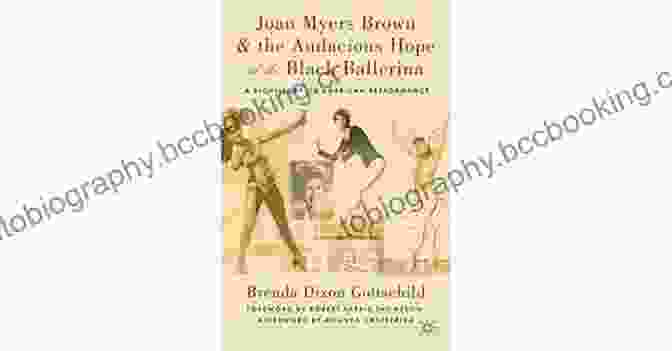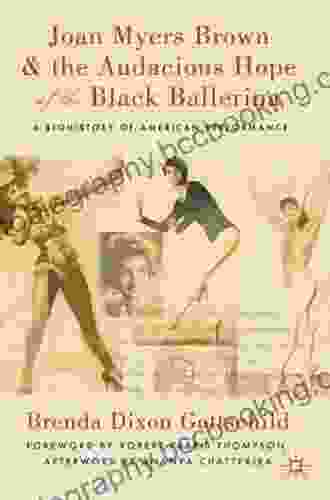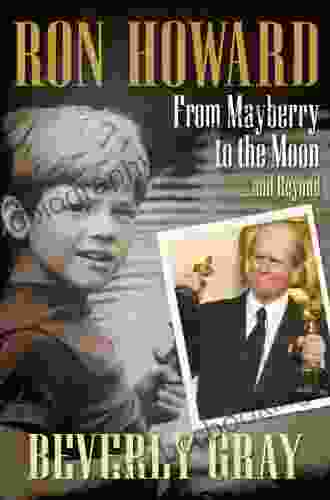Biohistory of American Performance: Exploring the Evolution of American Theater, Film, and Television


The performing arts in America have a rich and storied history, spanning centuries and encompassing a wide range of genres and styles. From the earliest days of Puritan theater to the golden age of Hollywood cinema and the rise of modern television, American performance has both reflected and shaped the nation's cultural landscape.
4.9 out of 5
| Language | : | English |
| File size | : | 4302 KB |
| Text-to-Speech | : | Enabled |
| Screen Reader | : | Supported |
| Enhanced typesetting | : | Enabled |
| Word Wise | : | Enabled |
| Print length | : | 589 pages |
In "Biohistory of American Performance," acclaimed theater historian and cultural critic Hugh Wyndham traces the evolution of American theater, film, and television through the lens of biohistory—a groundbreaking approach that examines the lives and careers of key figures in the arts against the backdrop of the social, political, and economic forces that shaped their work.
The Pioneers: Puritan Theater and the Birth of American Drama
The origins of American theater can be traced back to the austere Puritan colonies of New England. Religious authorities initially condemned stage plays as immoral, but by the mid-18th century, a more tolerant attitude towards theater began to emerge. Amateur theatrical societies sprang up in Boston, New York, and other major cities, producing plays by British and American playwrights.
One of the most important figures in the early American theater was Thomas Wignell, a Philadelphia actor and manager who in 1794 founded the first permanent theater in the United States. Wignell's theater became a hub for American playwrights and actors, and its success paved the way for the development of a professional theater industry in America.
The Golden Age of American Theater
The first half of the 19th century witnessed the emergence of a golden age of American theater. Playwrights such as Washington Irving, William Dunlap, and James Kirke Paulding wrote plays that celebrated American themes and characters. Actors like Edwin Forrest and Charlotte Cushman achieved international fame for their powerful performances.
One of the most influential figures of this period was Augustin Daly, a New York theater manager who produced grand-scale spectacles that combined elements of drama, music, and dance. Daly's innovative productions revolutionized American theater and laid the groundwork for the development of modern musical theater.
The Rise of Film and the Birth of Hollywood
In the late 19th century, the invention of motion pictures transformed the entertainment industry. Early films were short and simple, but they quickly gained popularity and by the 1920s, Hollywood had emerged as the world's center of film production.
One of the key figures in the rise of Hollywood was D.W. Griffith, a director who pioneered the use of close-ups, flashbacks, and other techniques that would become standard in filmmaking. Griffith's epic film "Birth of a Nation" (1915) was a major box office success, but its racist depiction of African Americans sparked controversy and helped to fuel the growth of the Ku Klux Klan.
The Golden Age of Hollywood
The 1930s and 1940s marked the golden age of Hollywood cinema. During this period, Hollywood studios produced a vast number of high-quality films that entertained audiences around the world. Some of the most iconic films of this era include "Citizen Kane" (1941),"Gone with the Wind" (1939),and "Casablanca" (1942).
One of the most important figures of the golden age was Alfred Hitchcock, a British director who made some of the most suspenseful and psychologically complex films of all time. Hitchcock's films, such as "North by Northwest" (1959) and "Psycho" (1960),continue to be studied and admired by filmmakers around the world.
The Rise of Television
In the post-World War II era, television emerged as a new and powerful medium that would challenge the dominance of film. Early television shows were often live broadcasts of plays, operas, and other live events. By the 1950s, however, scripted television dramas and sitcoms began to dominate the airwaves.
One of the most influential figures in the early days of television was Lucille Ball, a comedienne and actress who starred in the groundbreaking sitcom "I Love Lucy" (1951-1957). Ball's show was one of the first to feature a female protagonist and it helped to pave the way for greater representation of women on television.
The New Hollywood and Beyond
The 1960s and 1970s witnessed the rise of the New Hollywood movement, a group of young filmmakers who rejected the conventions of traditional Hollywood filmmaking. New Hollywood directors such as Francis Ford Coppola, Martin Scorsese, and Steven Spielberg made films that were more personal, experimental, and socially conscious.
In the decades since the New Hollywood era, American performance has continued to evolve and adapt to the changing times. The rise of cable television, streaming services, and the internet have created new opportunities for artists and audiences alike. Today, American performance is more diverse and accessible than ever before, and it continues to play a vital role in the nation's cultural life.
"Biohistory of American Performance" is a comprehensive and engaging account of the evolution of American theater, film, and television. Through the lens of biohistory, Hugh Wyndham sheds new light on the key figures and events that shaped the history of American performance. This book is an essential read for anyone who is interested in the history of American culture and the performing arts.
Call to Action
Free Download your copy of "Biohistory of American Performance" today and dive into the fascinating history of American theater, film, and television. Available now from Our Book Library, Barnes & Noble, and other major booksellers.
4.9 out of 5
| Language | : | English |
| File size | : | 4302 KB |
| Text-to-Speech | : | Enabled |
| Screen Reader | : | Supported |
| Enhanced typesetting | : | Enabled |
| Word Wise | : | Enabled |
| Print length | : | 589 pages |
Do you want to contribute by writing guest posts on this blog?
Please contact us and send us a resume of previous articles that you have written.
 Book
Book Novel
Novel Page
Page Chapter
Chapter Text
Text Story
Story Genre
Genre Reader
Reader Library
Library Paperback
Paperback E-book
E-book Magazine
Magazine Newspaper
Newspaper Paragraph
Paragraph Sentence
Sentence Bookmark
Bookmark Shelf
Shelf Glossary
Glossary Bibliography
Bibliography Foreword
Foreword Preface
Preface Synopsis
Synopsis Annotation
Annotation Footnote
Footnote Manuscript
Manuscript Scroll
Scroll Codex
Codex Tome
Tome Bestseller
Bestseller Classics
Classics Library card
Library card Narrative
Narrative Biography
Biography Autobiography
Autobiography Memoir
Memoir Reference
Reference Encyclopedia
Encyclopedia Bjas Addy
Bjas Addy Bill Klein
Bill Klein Ben Westhoff
Ben Westhoff Bernard J Healey
Bernard J Healey Belle Ward
Belle Ward Beau Miles
Beau Miles Bill Carter
Bill Carter Bobbie Merrill
Bobbie Merrill Bob Gregory
Bob Gregory Bathroom Readers Institute
Bathroom Readers Institute Bob Rohm
Bob Rohm Bob Hartman
Bob Hartman Bill Chambers
Bill Chambers Bob Spitz
Bob Spitz Boikai S Twe
Boikai S Twe Bob H Lee
Bob H Lee Brendan Burke
Brendan Burke Barney Scout Mann
Barney Scout Mann Bart Casey
Bart Casey Bob Berry
Bob Berry
Light bulbAdvertise smarter! Our strategic ad space ensures maximum exposure. Reserve your spot today!
 Emmett MitchellFollow ·11k
Emmett MitchellFollow ·11k Ernesto SabatoFollow ·16.7k
Ernesto SabatoFollow ·16.7k Winston HayesFollow ·16.6k
Winston HayesFollow ·16.6k Cooper BellFollow ·12.4k
Cooper BellFollow ·12.4k Bo CoxFollow ·7.9k
Bo CoxFollow ·7.9k James GrayFollow ·3.4k
James GrayFollow ·3.4k Ethan GrayFollow ·10.2k
Ethan GrayFollow ·10.2k Michael SimmonsFollow ·17k
Michael SimmonsFollow ·17k

 Alex Foster
Alex FosterRediscover the Old Testament with a Captivating Graphic...
Prepare to embark on an extraordinary...

 Ross Nelson
Ross NelsonThe Christmas Story: The Brick Bible for Kids
LEGO® Bricks Meet the...

 Anton Chekhov
Anton ChekhovUnveiling the Hidden History: The Brick Chronicle of...
In the annals of American history, the...

 Blake Bell
Blake BellOptions Trading Crash Course: A Comprehensive Guide to...
In the fast-paced and...

 Percy Bysshe Shelley
Percy Bysshe ShelleyUnlock Your Artistic Potential with "The Practical...
The Indispensable Handbook for...
4.9 out of 5
| Language | : | English |
| File size | : | 4302 KB |
| Text-to-Speech | : | Enabled |
| Screen Reader | : | Supported |
| Enhanced typesetting | : | Enabled |
| Word Wise | : | Enabled |
| Print length | : | 589 pages |













